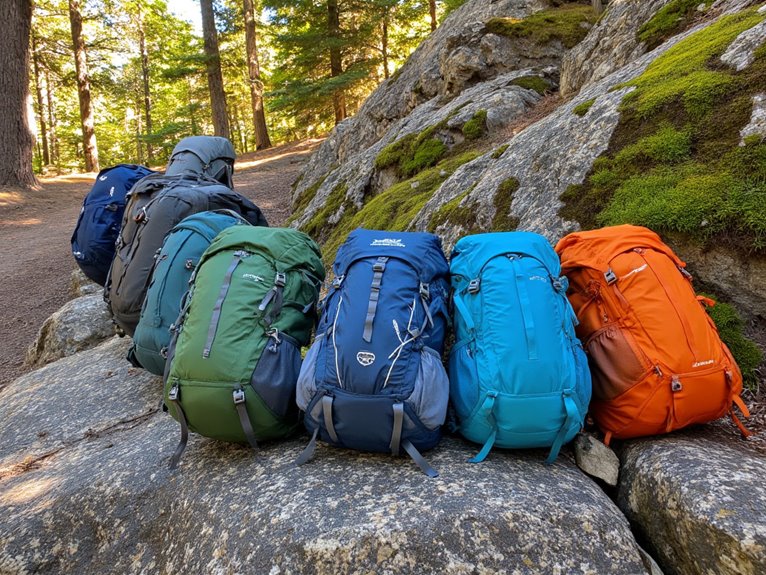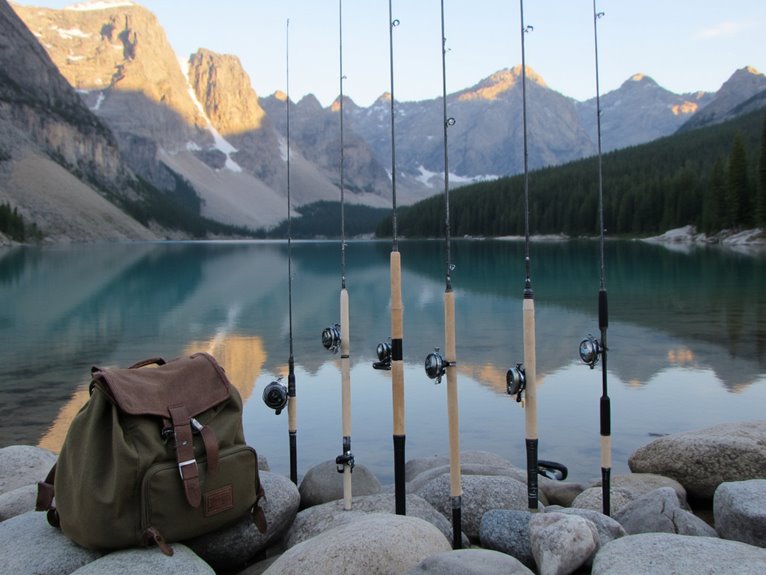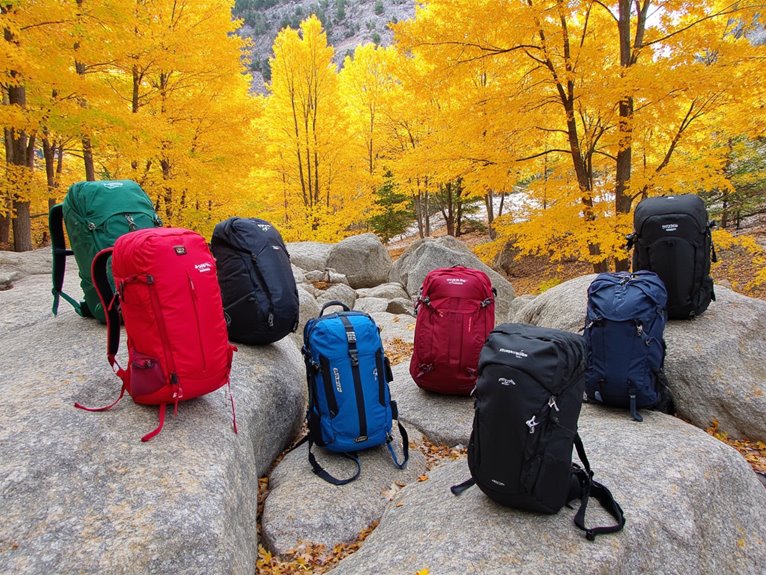Are Sleeping Bag Liners Worth It
You’ll find sleeping bag liners absolutely worth the $25-60 investment for their multifaceted benefits. They add 5-15°F of warmth without bulk, extend your sleeping bag’s lifespan by 3-5 years through hygiene protection, and provide superior moisture control via advanced wicking fabrics. Silk options offer the best warmth-to-weight ratio, while cotton provides breathability for comfort. They function as standalone sleep solutions in warm weather and dramatically reduce washing frequency, preserving insulation integrity while protecting against contaminants that compromise performance and durability.
We are supported by our audience. When you purchase through links on our site, we may earn an affiliate commission, at no extra cost for you. Learn more. Last update on 4th December 2025 / Images from Amazon Product Advertising API.
Notable Insights
- Sleeping bag liners add 5-15°F of warmth without extra bulk, extending your sleeping bag’s temperature rating effectively.
- Liners create a hygienic barrier that reduces washing frequency and extends sleeping bag lifespan by 3-5 years.
- Quality liners cost $25-60 and provide excellent value through improved comfort, moisture management, and gear protection.
- Liners function as standalone bedding in warm weather, eliminating the need for heavy sleeping bags during travel.
- Advanced fabric technologies offer superior moisture wicking and temperature regulation for better sleep quality outdoors.
What Are Sleeping Bag Liners and How Do They Work
A sleeping bag liner is fundamentally a fabric sleeve or sheet that fits inside your sleeping bag, creating an additional barrier between your body and the bag’s interior material.
You’ll find liner materials ranging from cotton and silk to fleece and synthetic fabrics, each offering distinct performance characteristics.
The liner functions through thermal layering principles. It traps air between itself and your sleeping bag’s interior, much like adding another clothing layer in cold weather. This trapped air space enhances your bag’s overall insulation capacity.
Different insulation types work more effectively with specific liner materials—down fills pair well with breathable silk liners, while synthetic fills complement moisture-wicking synthetic liners.
Matching your liner material to your sleeping bag’s insulation type maximizes thermal efficiency and moisture management performance.
The liner also manages moisture by creating a wicking layer that draws sweat away from your skin, preserving your sleeping bag’s loft and insulation performance. This protection keeps your sleeping bag free of dirt and body oils that would otherwise accumulate during use. Most liners pack down to a compact size similar to a small water bottle, making them easy to transport without adding significant weight to your gear.
Quality liners are typically constructed from 20D-40D nylon materials with tear-resistant properties, ensuring long-lasting durability during extended outdoor use.
Protecting Your Investment Through Better Hygiene
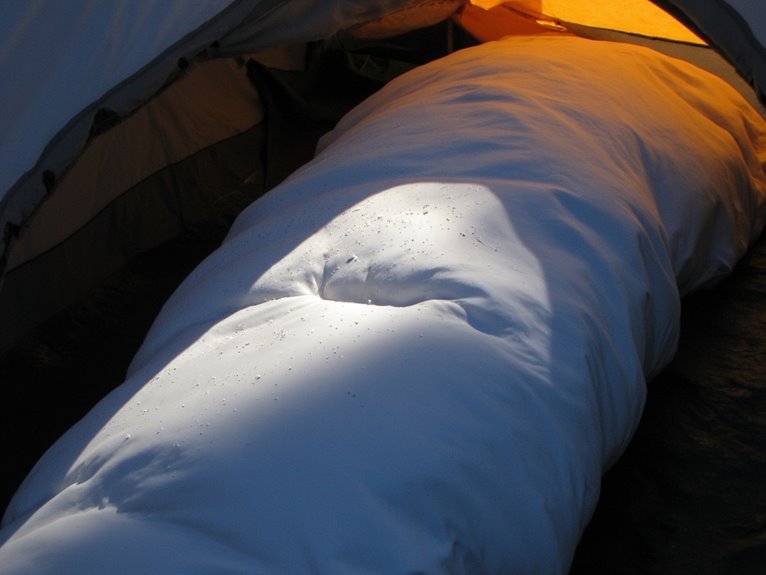
Beyond thermal performance, sleeping bag liners serve as your primary defense against the gradual degradation that comes from repeated body contact with expensive sleeping gear.
Your sleeping bag’s insulation materials deteriorate when exposed to body oils, sweat, and external contaminants. A liner creates a hygienic barrier that prevents these damaging substances from penetrating the bag’s fabric and fill materials.
This protection extends beyond personal hygiene to include environmental threats like fine sand, dirt, and chemical residues from sunscreen or insect repellent.
The maintenance reduction benefits are substantial:
- Prevents oil and sweat penetration into expensive down or synthetic fill
- Blocks external contaminants that compromise insulation performance
- Reduces washing frequency, preserving fabric treatments and loft
- Protects against chemical damage from personal care products
- Extends overall lifespan through consistent barrier protection
When your liner accumulates dirt, simply remove and wash it separately, leaving your sleeping bag fresh and ready for continued use. The soft, knitted fabrics stretch and move with you during sleep, ensuring protection doesn’t compromise comfort.
Similar to how sleeping pads utilize durable nylon construction to withstand outdoor wear and tear, quality liners provide resilient protection that maintains effectiveness over extended use.
Enhanced Comfort for Better Sleep Quality
While hygiene protection forms the foundation of liner value, comfort enhancement delivers the immediate benefit you’ll notice during every night’s sleep.
Liners provide superior sleep quality through multiple comfort mechanisms. Silk materials offer smooth surfaces that eliminate skin irritation from rough sleeping bag fabrics. Fleece variants deliver enhanced warmth retention for cold-weather applications.
Temperature regulation becomes precise with liner integration. Wicking properties actively manage moisture accumulation, keeping your skin dry throughout the night. This moisture management prevents the clammy feeling that disrupts sleep cycles.
Precise temperature control through moisture-wicking technology eliminates uncomfortable dampness and prevents sleep-disrupting clamminess throughout the night.
Breathable materials like silk allow excess heat to escape while maintaining core warmth levels. The hygroscopic properties of silk absorb moisture without creating a damp feeling against your skin.
The additional thermal layer creates consistent body temperature maintenance. This stability promotes deeper sleep phases and reduces nighttime disturbances from temperature fluctuations. Similar to how proper spinal alignment is crucial for side sleepers using adequate sleeping pads, liners help maintain optimal sleeping conditions that prevent discomfort throughout the night. Regular use helps combat dust and grime accumulation that would otherwise affect your comfort throughout the night.
Adding Warmth Without Extra Bulk
Comfort improvements pair naturally with thermal performance gains, but the real advantage lies in achieving measurable warmth increases without expanding your pack size.
Effective thermal insulation through liners delivers 5-15°F temperature boosts while maintaining weight management priorities.
Your liner selection directly impacts both warmth delivery and pack efficiency:
- Silk liners add 5°F warmth with minimal weight penalty
- Synthetic materials provide moderate insulation with quick-drying properties
- Thermal boost fabrics like Thermolite maximize warmth-to-bulk ratios
- Vapor barrier liners reduce heat loss through moisture management
- Fleece options deliver maximum warmth when bulk isn’t critical
Smart layering strategy transforms your sleep system without requiring heavier sleeping bags.
You’ll trap body heat within the bag’s microclimate, creating an intermediate thermal layer that enhances insulation efficiency without compromising portability. Women typically require bags rated 10-15 degrees warmer than standard, making liners particularly valuable for female hikers seeking versatile temperature adjustments. Liners function as versatile travel solutions for hostels, hotels, and various sleeping arrangements beyond traditional camping scenarios. Beyond temperature enhancement, liners also extend sleeping bag durability by creating a protective barrier against body oils and moisture.
Versatile Applications Beyond Traditional Camping
Modern travelers frequently encounter sleeping situations that extend far beyond wilderness camping, and sleeping bag liners excel in these diverse environments where hygiene and comfort become paramount concerns.
You’ll find them invaluable in hostels where sheet quality remains questionable. Hostel hygiene becomes manageable when you create a personal barrier between yourself and potentially unclean bedding.
Your liner transforms into a standalone sleeping solution during warm-weather travel.
When temperatures soar, your liner becomes a complete sleep system, eliminating the need for bulky sleeping bags entirely.
Hotels, shared accommodations, and public sleeping areas all benefit from this hygienic layer. Travel comfort improves markedly when you maintain consistent sleeping conditions regardless of location. Liners provide added warmth inside sleeping bags without needing to purchase a new, more expensive sleeping bag.
Emergency situations where standard gear isn’t available make liners essential backup equipment. They pack into small stuff sacks without adding meaningful weight to your luggage. The lightweight and compact design makes them particularly appealing to those who travel light. Many quality sleeping bags feature cotton or flannel inner linings that enhance breathability and comfort.
This versatility makes them perfect for frequent travelers who encounter varied sleeping arrangements across different trip types.
Superior Moisture Control in All Conditions
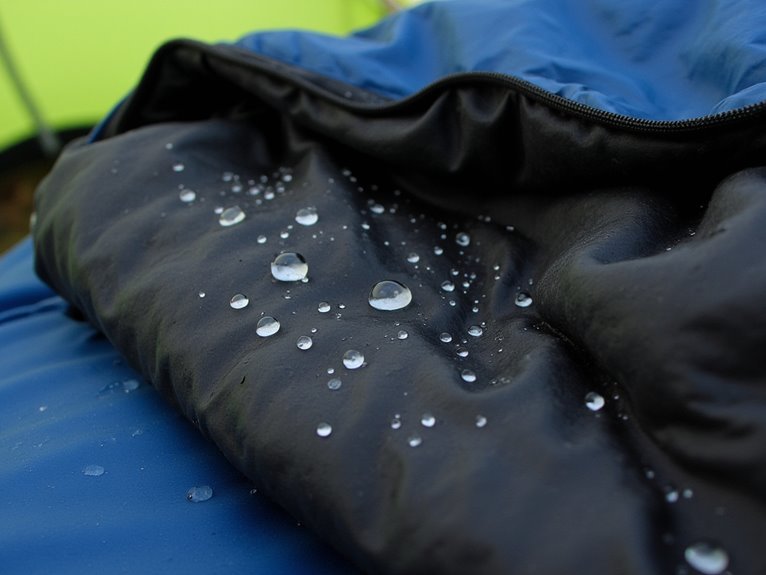
Because sleeping bag liners excel at managing moisture through advanced fabric technologies, they’ve become essential gear for maintaining thermal efficiency and comfort across diverse environmental conditions.
You’ll find CoolMax® and microfleece materials actively transport sweat away from your skin, preventing the chilling effects that lead to hypothermia in wet conditions.
Effective moisture management and temperature regulation work together through these key mechanisms:
- Wicking fabrics transfer perspiration to outer layers where it evaporates safely
- Physical barriers protect insulation from body oils and external moisture
- Quick-drying properties enable rapid moisture elimination in humid environments
- Breathable materials balance air circulation with dampness protection
- Condensation control prevents saturation when tent walls collect moisture
This moisture control system maintains your sleeping bag’s loft and insulation properties across varied climates.
Key Factors When Selecting the Right Liner
Which sleeping bag liner will perform best for your specific outdoor adventures? Your choice depends on four critical factors that directly impact performance and comfort.
Liner materials determine functionality. Silk provides maximum warmth-to-weight ratio and natural odor resistance. Cotton offers superior breathability but increases pack weight. Microfleece delivers excellent insulation but sacrifices packing efficiency.
| Material | Weight (oz) | Pack Size |
|---|---|---|
| Silk | 3-5 | Very Small |
| Cotton | 8-12 | Medium |
| Microfleece | 6-10 | Large |
Consider your primary use case. Backpackers prioritize weight and compactness, making silk ideal. Car campers can afford heavier cotton for comfort. Shape matters too—mummy designs maximize thermal efficiency while rectangular styles provide movement freedom. Match liner specifications to your sleeping system’s requirements for ideal performance.
Weighing the Benefits Against the Cost

When you’re deciding whether to invest in a sleeping bag liner, you need to evaluate the upfront cost against the performance gains and protection it provides.
A quality liner typically costs $25-60 but can extend your sleeping bag’s lifespan by 3-5 years while adding 5-15°F of warmth, making the cost-per-use calculation favorable for regular campers.
The long-term value becomes clear when you consider that replacing a $200 sleeping bag every few years due to hygiene issues costs considerably more than maintaining it with a washable liner.
Cost Vs Performance
Although sleeping bag liners require an upfront investment ranging from $25 to over $80, their performance benefits often justify the expense through enhanced warmth, extended gear lifespan, and improved sleep quality.
Budget options like the Alps Mountaineering Microfiber Mummy liner deliver solid performance without premium pricing.
Your material selection directly impacts both cost and functionality. Synthetic materials offer durability and easy maintenance at lower prices, while silk provides superior weight-to-warmth ratios at higher costs.
Performance metrics reveal compelling value:
- Warmth addition extends sleeping bag temperature ratings by 5-15°F
- Moisture management reduces chilling from sweat accumulation
- Protection from body oils extends sleeping bag lifespan considerably
- Versatility allows year-round usage across varying conditions
- Comfort enhancement improves sleep quality through softer fabric interfaces
Premium options like Western Mountaineering justify higher costs through superior materials and construction quality.
Long-term Value Analysis
Beyond immediate performance gains, sleeping bag liners deliver considerable long-term financial returns through protective benefits that extend your primary gear’s operational lifespan.
Your sleeping bag experiences markedly reduced contamination from body oils, sweat, and dirt when protected by a liner barrier. This investment protection translates to washing your bag 60-70% less frequently, preventing insulation degradation and fabric wear.
Down-filled bags particularly benefit from this hygiene maintenance approach, as body oils compress loft and reduce thermal efficiency. A $30-50 liner protects a $300-600 sleeping bag investment effectively.
Liners handle frequent washing cycles without degradation, while sleeping bags require expensive professional cleaning or risk damage. You’ll replace multiple liners before needing a new sleeping bag, creating considerable cost savings over 5-10 years of regular outdoor use.
Frequently Asked Questions
Can Sleeping Bag Liners Be Used as Standalone Bedding in Warm Weather?
You can use sleeping bag liners as standalone bedding in temperatures down to 50°F (10°C).
Fabric types like Coolmax and microfleece provide effective temperature regulation through moisture-wicking properties. Liners weigh under 10 ounces and offer superior breathability compared to full sleeping bags.
You’ll need wind protection and appropriate base layers for maximum comfort. They’re ideal for summer camping when you want lightweight, packable bedding without overheating.
How Often Should You Wash a Sleeping Bag Liner During Extended Trips?
You should wash your liner after every trip to prevent bacterial buildup and maintain hygiene.
During extended trips without washing facilities, pack multiple liners for rotation.
Use normal detergent on a gentle cycle, avoiding fabric softener which reduces moisture-wicking properties.
For drying methods, choose low heat settings or air-dry to prevent material damage and shrinkage, especially with silk liners.
Do Sleeping Bag Liners Work With Mummy-Style and Rectangular Sleeping Bags Equally?
Sleeping bag liners don’t work equally with both styles.
Mummy compatibility is superior because the tapered design creates a snug fit that maximizes thermal efficiency and heat retention. You’ll get peak insulation with mummy-shaped liners in mummy bags.
Rectangular effectiveness is lower since the loose fit reduces thermal performance, though you’ll gain more room to move and easier entry/exit access.
Will Using a Liner Void My Sleeping Bag’s Warranty Coverage?
Using a liner won’t void your sleeping bag’s warranty coverage.
Warranty policies typically focus on manufacturing defects, not accessory use. Most manufacturers actually recommend liners in their usage guidelines since they protect against dirt and oils that could damage the bag.
Liners reduce washing frequency, which helps maintain warranty validity by preventing damage from improper cleaning methods that often void coverage.
Can You Use Multiple Liners Together for Extra Warmth in Winter?
You can stack multiple liners using proper layering techniques, but thermal efficiency decreases with each addition.
Insulated liners add up to 25°F individually, though real-world gains are lower. Diminishing returns occur as compression reduces air pockets between layers.
Two quality liners typically provide ideal warmth-to-bulk ratio. Beyond that, you’ll face restricted movement and overheating risks while gaining minimal temperature benefits.
On a final note
You’ll find sleeping bag liners deliver measurable value across multiple performance metrics. They extend your bag’s lifespan by reducing contamination, add 5-15°F of thermal efficiency, and weigh just 3-8 ounces. The initial $15-60 investment pays dividends through reduced cleaning costs and enhanced versatility. Whether you’re pursuing ultralight objectives or maximizing comfort, liners represent a worthwhile upgrade that’ll improve your sleep system’s overall functionality and longevity.


